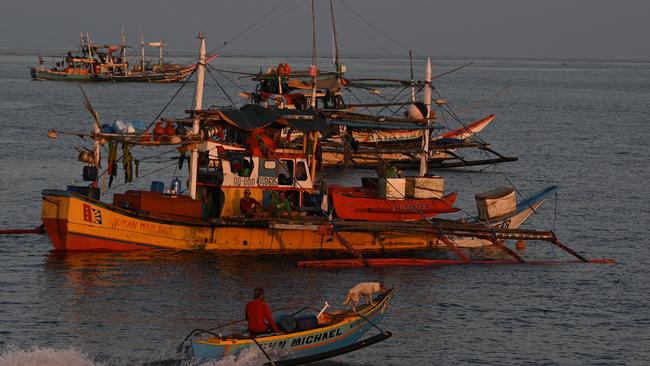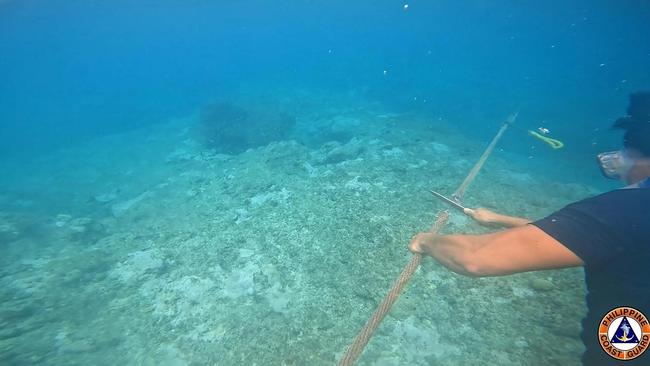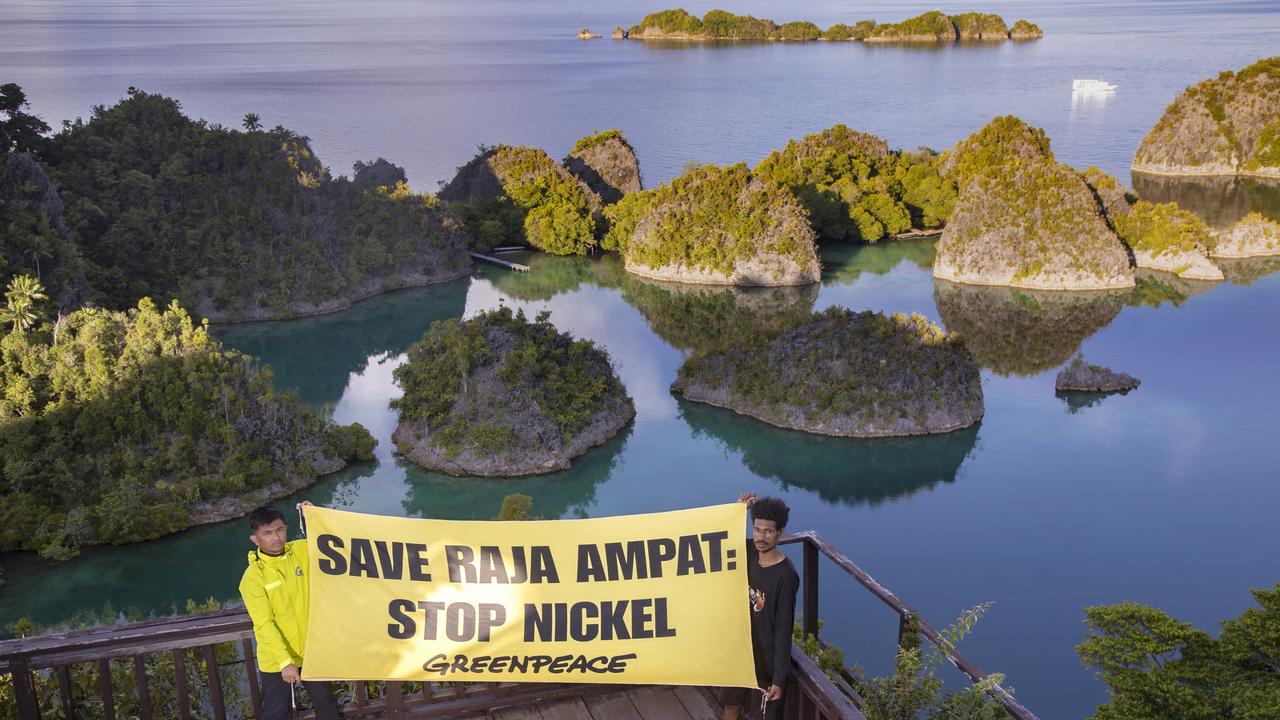Manila raises stakes in regional rivalry in South China Sea
Philippines President Ferdinand Marcos Jr has raised the stakes in his country’s stoush with Beijing in the South China Sea.

Philippines President Ferdinand Marcos Jr has raised the stakes in his country’s stoush with Beijing in the South China Sea by ordering the removal of a floating Chinese barrier built to stop Filipino fishermen from accessing the disputed Scarborough Shoal.
The Philippines coastguard said divers removed the 300m line of buoys late on Monday in compliance with a presidential order that deemed the barrier a “hazard to navigation, a clear violation of international law” and a violation of traditional fishing rights.
“The decisive action of the Philippine coast guard to remove the barrier aligns with international law and the Philippines’ sovereignty over the shoal,” the coast guard said.
Video footage released by the Philippine coast guard in Manila shows a diver using a knife to cut part of the barrier rope attached to white buoys.
Coastguard spokesman Jay Tarriela revealed on Tuesday that Chinese coastguard officials at the shoal later removed the rest of the barrier and the incident did not escalate into a stand-off.
Jay Batongbacal, a South China Sea expert who heads the Manila-based Institute for Maritime Affairs and Law of the Sea, said China had built similar barriers in the past but Monday was the first time Philippines authorities had removed it.

Former president Rodrigo Duterte had always sought to avert conflict by ordering retreat in the face of Chinese aggression but Monday’s actions demonstrated Beijing was now dealing with a government with an entirely different approach.
“It’s possible China will up the ante but we have got so used to China saying any response is escalatory that I guess it has reached the point where The Philippines has decided it’s had enough,” Dr Batongbacal told The Australian.
“There will always be a risk for The Philippines but I think we have reached a point where we have very little to lose. We are not able to explore for petroleum, our fishermen cannot fish.”
China seized Scarborough Shoal from The Philippines in 2012, prompting Manila to take its case to a UN arbitral tribunal, which ruled in 2016 that China’s “historic rights” claims over most of the South China Sea – including its “nine-dash line” map and land reclamation activities – were illegitimate.
But Beijing has refused to acknowledge the ruling, and has defended its claims with increasing muscularity, including at the Scarborough Shoal where it has blocked Filipino fishermen from accessing the lagoon for more than a decade.
The latest controversy comes just days after The Philippines foreign ministry announced it was also considering legal action against Beijing over the destruction of coral reefs caused by 33 Chinese vessels moored for two months at Iroquois Reef.
The area lies within The Philippines’ exclusive economic zone but is also part of the disputed Spratly Islands chain where China has constructed a series of man-made islands on submerged reefs, some equipped with military-style runways, hangars, radar and missile systems.
Chinese foreign ministry spokesman Wang Wenbin on Monday insisted China had “indisputable sovereignty” over the Scarborough Shoal and its adjacent waters.
Chinese Communist Party mouthpiece The Global Times also accused The Philippines of escalating friction between the two nations “at the instigation of the United States”, warning Manila could pay a “heavy price” for stoking confrontation.
The South China Sea has long been regarded as a delicate fault line in the US-China rivalry in the region.
But Mr Marcos told an ASEAN summit earlier this month that he rejected “misleading narratives that frame the disputes in the South China Sea solely through the lens of strategic competition between two powerful countries”.
“This not only denies us our independence and our agency, but also disregards our own legitimate interests,” he told leaders of the regional bloc that has consistently failed to back Manila in its David-and-Goliath sovereignty battle.
Maritime security analyst Collin Koh said support from treaty allies the US and Australia – both of whom have committed to joint patrols with the Philippines’ navy – had likely bolstered Manila’s confidence, but Mr Marcos was also responding to growing public frustration over China’s bullying.
“Even if Marcos Jr wanted to be more conciliatory to China, domestic sentiments means he doesn’t have much room to manoeuvre,” he said.
Dr Batongbacal said he too interpreted the latest measures as a demonstration of The Philippines’ determination to assert itself.
“When you look at the map The Philippines really is the first line of defence for ASEAN,” he said.
“We are the ones bearing the brunt of Chinese expansion.”




To join the conversation, please log in. Don't have an account? Register
Join the conversation, you are commenting as Logout